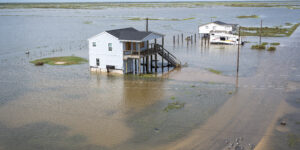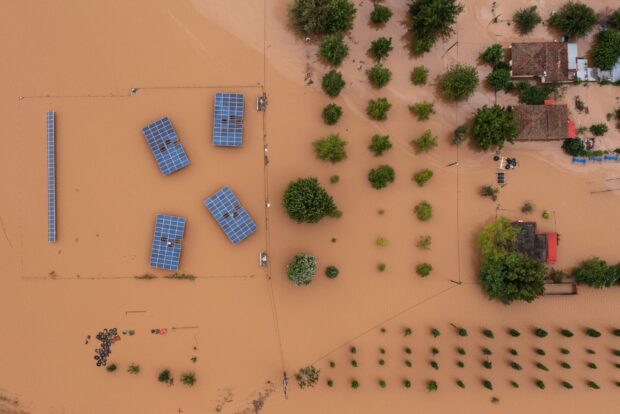From dangerously warm temperatures to vast species extinctions, humans are living on a planet that is becoming inhospitable—with only three key health markers considered safe, according to a new scientific study.
Researchers have run a full fitness examination on Earth by analyzing nine boundaries that define a safe operating space for humanity. Six out of these have been crossed so far and pressure on all of them is increasing, according to a research paper published Wednesday in the journal Science Advances.
“This does not mean that we are pushing the planet across an irreversible collapse,” said Johan Rockström, the director of the Potsdam Institute for Climate Impact Research and a co-author of the paper. “But it means we’re losing resilience — we are putting the stability of the Earth system at risk, and the buffering capacity of the Earth system to buffer stress and shocks at risk.”
Scientists have spent decades analyzing how climate change, driven by human-made greenhouse gas emissions, impacts every aspect of life on Earth. But understanding how different indicators interact with each other, and the planet’s climate and ecosystem as a whole, requires deploying comprehensive computer models and simulations. The framework of “planetary boundaries” dates to 2009, and researchers at the Stockholm Resilience Center in Sweden have spent almost 15 years studying them and refining their calculations. This is the first major update published since 2015.
“This is a real scientific breakthrough,” Rockström told reporters on Tuesday. “It’s the first time we have a scientific health check for the whole planet and we are able to provide quantification for all the nine boundaries.”
Among the boundaries that have been breached are freshwater availability, land system changes from activities such as deforestation, biodiversity loss and extinctions and concentrations of carbon dioxide. Earth is currently operating safely in only three areas: the depletion of ozone in the stratosphere, the loading of aerosol in the atmosphere and ocean acidification.
“Ocean acidification is rapidly moving into the wrong direction, what we call the yellow zone,” Rockström said.
But there are reasons for hope, said Katherine Richardson, a professor in biological oceanography in Denmark and the lead author of the research. The ozone depletion limit was exceeded in the 1990s, but a global commitment to phase out ozone-depleting substances under the Montreal Protocol reversed that trend.
Richardson cautioned against some solutions to reduce greenhouse gas emissions: For example, replacing fossil fuels with biomass for energy should not come at the cost of depleting forests.
“For 3.5 billion years the environmental conditions on Earth have been determined by the interaction between life and climate,” she said. “We’re not going to fix the climate problem if we don’t respect the boundary for how much biomass we can take out.”
Photograph: Solar panels surrounded by floodwater following Storm Daniel in the village of Piniada, in Trikala region, Greece, on Thursday, Sept. 7, 2023. Photo credit: Konstantinos Tsakalidis/Bloomberg





















 What to Expect in 2026: U.S. P/C Results More Like 2024
What to Expect in 2026: U.S. P/C Results More Like 2024  AI in Property/Casualty Insurance: Why Trusted Data Is the Missing Link
AI in Property/Casualty Insurance: Why Trusted Data Is the Missing Link  The Hardest Part of Innovation in Insurance Isn’t Technology; It’s Culture
The Hardest Part of Innovation in Insurance Isn’t Technology; It’s Culture  Berkshire Hathaway Announces Leadership Appointments: New CEO at GEICO
Berkshire Hathaway Announces Leadership Appointments: New CEO at GEICO 




